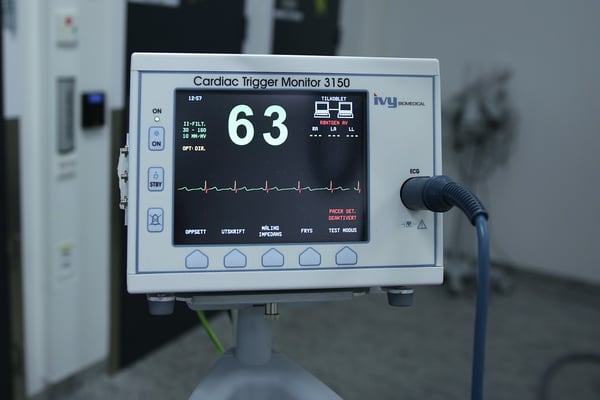The Hoag Institute is the first center within Orange County to offer this treatment.
The Hoag's Jeffrey M. Carlton Heart & Vascular Institute is a premier MedTech organization based out of Newport Beach that has recently performed its 500th (Transcatheter Aortic Valve Replacement) TAVR procedure -- a significant accomplishment that bodes well for the future success of this treatment. The TAVR procedure is recognized for being a much less invasive treatment for the replacement of heart valves in patients when compared to open-heart surgery, which is why the ongoing success of this procedure is essential for the future of medicine and quality of care for patients in the future.
By sending an artificial valve through a thin catheter, only a small incision needs to be made during the procedure, which makes this an ideal treatment option for patients who require a heart valve replacement but are elderly or in poor medical condition.
The Hoag Institute is the first center within Orange County to offer this treatment and has achieved landmark success with its with TAVR procedures. Even though this technology is in its relative infancy, the success that Hoag Institute has maintained in implementing this technology bodes well for future use throughout California and the U.S. This is just one example of why Southern California is leading in life science innovation and technology.
Among the most innovative companies in this region is Edwards Lifesciences, which is a company that specializes in the production of artificial heart valves with their very own Sapien 3 TAVR device. Through local innovation and academic support from nearby universities including UC Irvine, these renowned life science companies have been able to quickly transform the healthcare industry.
How a Transcatheter Aortic Valve Replacement (TAVR) Procedure Works
While the transcatheter aortic valve replacement procedure likely sounds like a complex and daunting surgical procedure, it's actually a minimally-invasive procedure, which means that it's much safer than a traditional open-heart surgery. Even though the concept of the TAVR procedure was first formed in 1985, the initial implantation in a human didn't occur until 2002. Since then, the treatment has continued to grow in popularity, which is due in large part to efforts by Edwards Lifesciences.
In 2004, Edwards Lifesciences acquired PVT, which allowed for very rapid improvements to be made to the TAVR procedure. Since 2010, this treatment has been used on an increasingly frequent basis. It's believed that TAVR will soon become the procedure of choice for patients who suffer from symptomatic aortic stenosis.
The leading companies who currently produce the artificial heart valves that are used in this procedure include Edwards Lifesciences and Medtronic. The Edwards Lifesciences device is referred to as Edwards Sapien 3, while the Medtronic device is the Medtronic CoreValve, both of which have proven to be very effective at replacing a damaged heart valve. While these artificial heart valves are designed primarily to be administered to individuals who are at a high risk of not surviving an open-heart surgery, the Medtronic CoreValve received approval by the FDA in 2017 to provide these valves to patients who have an intermediate risk of an open-heart surgery. As these valves continue to be used all throughout the U.S., there will likely come a time when most patients who require a artificial heart valve will be able to obtain the TAVR procedure regardless of condition.

The technology that's used for the TAVR procedure is simplistic yet highly effective. There are four heart valves that must work properly at all times in order for your heart to function like it's supposed to and to keep your blood moving in the correct direction. When one of these valves starts leaking or becomes damaged in some way, an artificial heart valve may need to replace it.
These valves are collapsible and are sent through a thin catheter in order to reach their intended destination. While the exact design of this device depends on the company that has created it, all current TAVR devices have similar design and implementation. For instance, the Sapien 3 by Edwards Lifesciences comes with a compact yet sturdy construction that includes an outer sealing skirt, a lightweight frame with a mesh design, high-quality bovine valve tissue, and a premium delivery system.
One of the primary benefits of this type of procedure is that the TAVR treatment comes with very little recovery time when compared to standard open-heart surgery as a non-invasive surgery leads to less damage and healing your body must endure post-surgery. This procedure begins with the provision of anesthesia to make sure that you don't feel any pain while the treatment is ongoing.
Throughout the surgery, your heart rhythm and function will be monitored so that any changes in heart function will be identified and addressed immediately. If your heart begins to function differently during the treatment, you'll be provided with a medication or some other solution that will be able to resolve the issue safely without needing to stop the procedure altogether. Your heart can be accessed in a variety of ways with the TAVR procedure, the primary of which involve sending the catheter through the groin, through a blood vessel in your leg, and through a small incision in your chest.
Once the appropriate incisions have been made, a thin tube known as a catheter will be sent through the access point and to your heart, which is a process that's aided by highly advanced imaging technology. The catheter will be taken through your blood vessels, over to your heart, and into the aortic valve. Once the catheter has reached the intended destination and the artificial valve has been correctly positioned, a small balloon will be used to expand the deflated replacement valve, which ensures that the valve is securely in place. The catheter will then be withdrawn before the blood vessel or incisions are closed. After the procedure has been concluded, you will likely be required to stay in the hospital for anywhere from 2-5 days.
Most patients who obtain the TAVR procedure will need to take blood-thinning medications to keep blood clots from developing. If you've been suffering from aortic stenosis, this treatment should be able to relieve your symptoms and improve your general health. TAVR is designed primarily to be used by individuals who are suffering from aortic stenosis but are unable to have surgery or are at a high medical risk.

As mentioned previously, the TAVR procedure is primarily restricted to individuals who are at an intermediate or high risk of not surviving an open-heart surgery. However, it's believed that the TAVR procedure will eventually become more widely available as the artificial heart valves are more widely produced. This treatment is needed by patients who are currently suffering from aortic valve stenosis, which is a rare condition that results from the aortic valve narrowing. When the aortic valve becomes narrowed, blood flow will be reduced or blocked altogether, which means that your heart will need to work much harder in order for blood to be pumped to the rest of your body.
If this condition is left untreated, a wide range of serious heart problems can occur. Some of the more common symptoms associated with aortic valve stenosis include chest pain, shortness of breath, heart palpitations, fatigue, and feeling dizzy whenever you are active. The complications of untreated aortic stenosis include heart failure, blood clots, a stroke, arrhythmia, bleeding, and possibly even death.
While open-heart surgery is known to be effective at treating such conditions as aortic valve stenosis, this is a very complicated and risky surgery that can be particularly problematic for individuals who are frail or weakened by this condition. There are many reasons for why you would want to select the TAVR procedure as opposed to open-heart surgery, the primary of which is that open-heart surgery is much more invasive. Even though invasive treatments such as open-heart surgery are oftentimes able to provide satisfactory results, they also put you at a higher risk of suffering from surgical complications post-procedure.
Along with being generally safer for patients, the TAVR procedure also has a much shorter recovery time, which means that you may be able to go back to work or home in a couple of weeks! When looking specifically at open-heart surgery, many individuals are unable to return to work for around 6-8 weeks following the procedure.
The final key benefit provided with this treatment is that it's much safer for sick or elderly patients than open-heart surgery. Before this treatment was invented, many elderly or sick patients were unable to undergo such a rigorous procedure like open-heart surgery, which greatly limited their options. TAVR eliminates these worries and provides such individuals with options they may have never thought possible.

Hoag's Jeffrey M. Carlton Heart & Vascular Institute is a widely respected and renowned health center in the U.S. Currently, they are one of only a few institutes that actually offers TAVR clinical trials, which allows for the creation of more advanced and innovative treatment solutions. While the Jeffrey M. Carlton Heart & Vascular Institute conducts an array of different clinical studies, among the most important that they administer is the early TAVR clinical trial.
The primary areas of focus during these clinical trials include cardiac valve surgery and cardiac imaging studies. The current trial that's being held to study the effectiveness of the TAVR procedure is focusing on comparing the results of TAVR implantation with the results of clinical surveillance for patients who suffer from certain heart diseases and aortic stenosis. This trial is intended to last from 2017-2021. However, an additional ten years of study is possible depending on the results.
Hoag's Jeffrey M. Carlton Heart & Vascular Institute has been delivering quantifiable results and breakthroughs for many years. Their accomplishments are numerous in regards to their clinical trials for various heart conditions. In fact, this institute is considered to be the highest-rated cardiovascular system throughout Orange County. They've also been ranked by the Society for Thoracic Surgeons within the highest category for successful outcomes, which is a designation that was achieved by less than 10 percent of hospitals throughout the nation. IBM Watson Health has listed them as one of the top 50 cardiovascular hospitals in the nation for the last three years, which speaks to the consistent level of care that this institute provides to its patients.
Some of the additional awards and recognition that the Jeffrey M. Carlton Heart & Vascular Institute has received over the years include the Get with The Guidelines Heart Failure Gold award by the American Heart Association, a Blue Distinction Center+ designation by Anthem Blue Cross, and a Cardiovascular Receiving Center designation by Orange County Emergency Medical Services. As one of the premier cardiovascular hospitals across the nation, patients can be confident that they will receive quality care no matter the complexity of the treatment.
Revised 11/18/2020
Download The Ultimate Guide to Wet Lab Incubators in Southern California, a handbook to assist life science start-ups through the entire decision-making process to find wet lab space.
Download Now